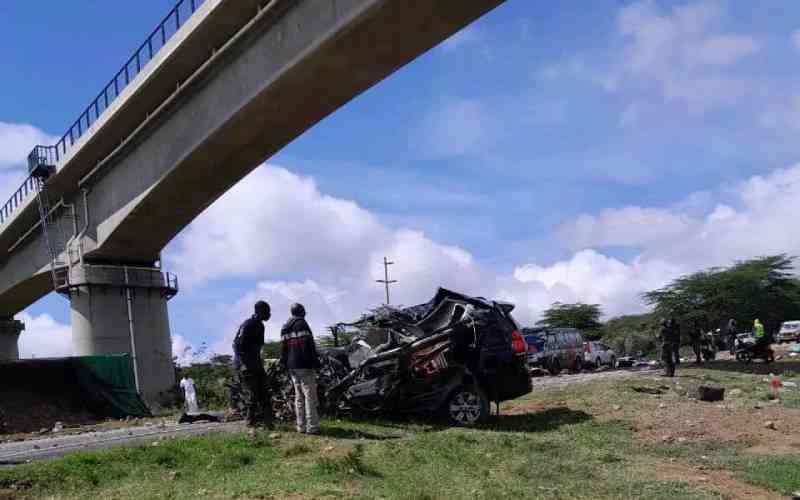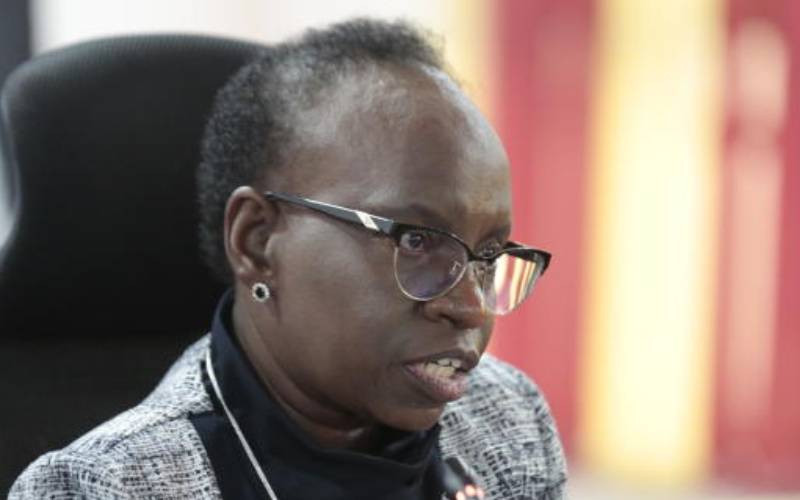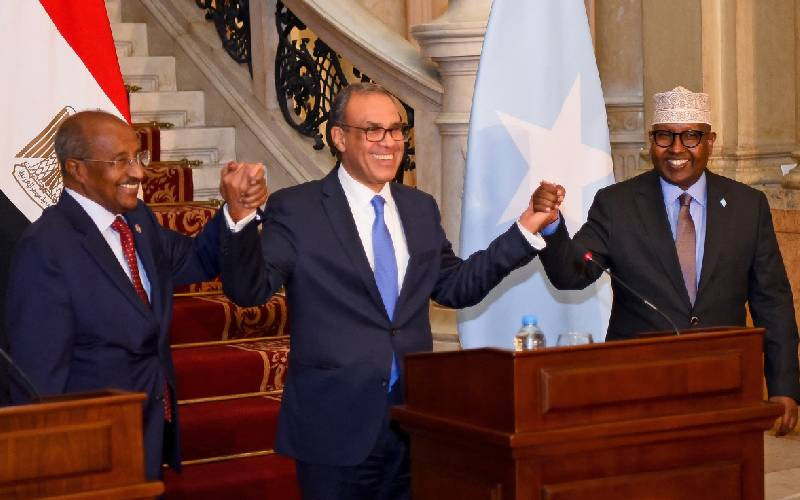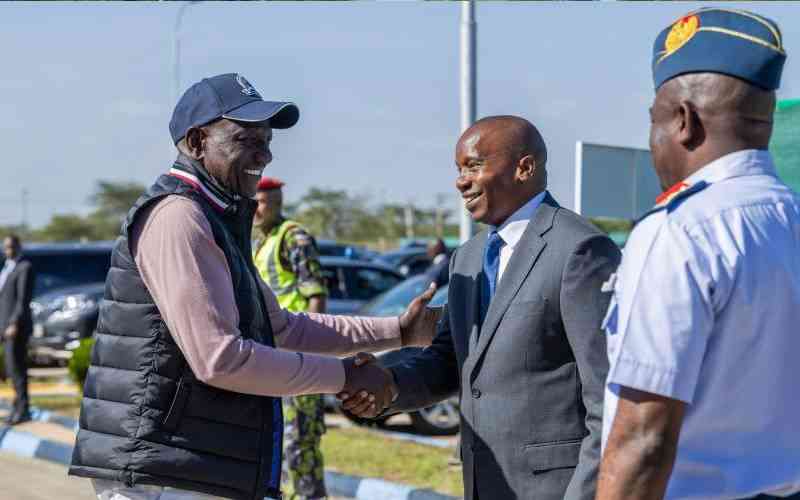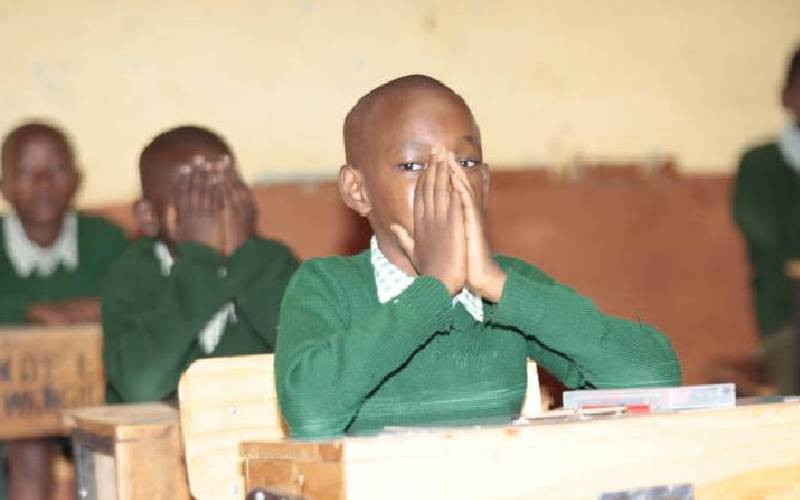By KIPCHUMBA KEMEI
Farmers in Narok will for the first time in decades harvest food crops after elephants that have been a menace are moved to Masai Mara Game Reserve (MMGR).
In October last year Kenya Wildlife Service (KWS) moved 112 elephants from settlement areas to the reserve at a cost of Sh7 million: it is expecting to translocate another 113 next month. The whole exercise will cost Sh31 million. If the elephants will move out of MMGR back to the settlement areas, they will be relocated to the Aberdare forest.
KWS director Dr Julius Kipngetich said the exercise that is fully funded by the Government is aimed at ending the endemic human-wildlife conflict that has claimed lives and made people in the area poor, most of who are dependent on handouts.
"Deaths and destruction of property had reached an alarming level and that is why the Government decided to end it once and for all through translocation," said Kipngetich who oversaw the ten-day exercise.
According to the data availed by KWS, an average of four people are killed annually by elephants, forcing it to spend about Sh5.2 million on compensation.
It was joy when the translocation was initiated. Locals, who have had to bear the brunt of human-wildlife conflict have praised the move, saying though belated, it would ameliorate their sufferings. "We are happy that they have finally been moved to their designated areas. It is sad that the Government had to wait for many years before moving them, leading to loss of lives and massive loss of property," said Ms Joan Neilyang, a mother of six and who lost her husband three years ago and relatives after they were attacked by elephants. 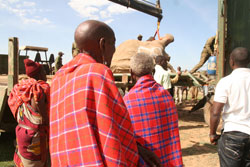 |
Locals watch as KWS officers load an elephant into a truck ready for relocation. [PHOTOS: KIPCHUMBA KEMEI/STANDARD] |
She also said pupils have over the years dropped out of school, something that has made Narok to continuously post poor results in national examinations.
"These beasts, we are told are important to the country’s economy because tourists come from all over the world come to watch them. We are also told our county council earns billions of shillings from tourism activities in MMGR. Where des does this money go?" Wondered Neilyang, 28 who dropped out of school in class two.
According to audited reports, the council annually earns Sh7.2 billion from tourism activities in the reserve. But the region is dogged by high poverty levels and low life expectancy. The conflict and poaching, according to KWS statistics, has seen the population of elephants drop from about 20,000 in the last two decades, to less than 10,000.
Five years ago, KWS raised compensation for loss of life as a result of human-wildlife conflict from Sh50,000 to Sh200,000 and injuries from Sh10,000 to Sh50,000. Communities neighbouring national parks and game reserves say the amount is too little and an abuse for their conservation efforts. Councilor Josphat Kirempe of Olkiriene ward in Narok South said the decision to move the elephants to Mara is a reprieve to the communities that have suffered because of their long presence in settlement zones and expressed confidence that it will lessen cases of conflict.
"Though KWS does not intend to move lions, leopards and buffalos from settlement areas to MMGR, the relocation of elephants will reduce the conflict by half. It will boost food production in the area and improve livelihoods of thousands of people whose lands are productive but could not be cultivated because of the elephant presence," says
Mr Kirempe, whose ward neighbours the larger Mara. Parseen Shunet, a prominent wheat and barley farmer from Oloonkabobok in Narok North and who has over the years lost crop and property because of the elephant menace has welcomed the move to move them to their designated area.
Massive losses
Stay informed. Subscribe to our newsletter
"We have suffered loses running to billions of shillings since elephants moved to settlement areas several decades ago. It will be a reprieve if they don’t come back," he says and adds that the Government should consider compensating farmers.
While people in Narok are happy with the translocation, those living in the Mara and especially those neighbouring the national reserve are unhappy because additional elephants means additional problems and misery to them.
"When KWS moves them here it means we will for long or perhaps forever not live in peace. The development means our people will continue to die and be maimed and their property destroyed.
KWS should find long lasting solutions to wildlife menace instead of applying half measures," said Peter Sayaton of Siana group ranch that neighbours MMGR. The KWS Narok senior warden Kenneth Naashu says not even a single elephant that was tagged has returned to settlement areas, adding they have coped with the new environment in Mara.
"Their movement is being monitored daily through the Global Positioning System. Instead of going back to where they came from, they are moving towards Serengeti National Park in Tanzania. We will not be bothered because Serengeti and Mara is one ecosystem," says Naashu. Kipngetich says Narok is one of the hot spots in as far as human-wildlife conflict is concerned, adding that the elephants that were moved to Mara in October had been stranded for more than 50 years.
He laments that human activities including agricultural activities have confined them to a smaller area.
"Agricultural activities like commercial wheat growing are rapidly expanding towards the Mara, which means the wildlife habitat has over the years shrunken.
The pressure for land is a threat to the existence of wildlife," the director warns. He urges communities to diversify their economic activities and embrace wildlife conservation through formation of wildlife conservancies that will make them appreciate the need to peacefully co-exist with wild animals.
"We will only succeed to conserve wildlife through benefit sharing. There is need for both Narok and Transmara county councils to ensure tourism benefits locals for them to appreciate them," he says and adds that if the elephants that were in October return to settlement areas, they will be moved to the Aberdare forest.
Mr Patrick Omondi, the head of elephants and diversity says KWS has currently run out of international allocated sedated elephant drug stock and has, placed an order to move out elephants from any settlement area in the country to a designated zone in the country.
Dr David Ndeenah, a senior KWS veterinary officer says etorphine-diprenosphine, the immobiliser drug, Kenyan quarter as of November last year has already been exhausted, adding that the narcotic drug is being regulated by the international market under the Vienna Convention.
"Before another translocation anywhere in the country, KWS board will have to get special clearance for the morphine drug procurement that will give enough resources for moving elephants from all settlement areas in the country," reveals Dr Ndeenah.
Mr Paul Udoto, KWS corporate communication manager says the launch of the second phase of elephant translocation from Narok to Mara is on course and adds that before it takes place, the service will have to launch a National Elephant Strategy that will provide a roadmap on how to conserve elephants in the next 10 years.
 The Standard Group Plc is a
multi-media organization with investments in media platforms spanning newspaper
print operations, television, radio broadcasting, digital and online services. The
Standard Group is recognized as a leading multi-media house in Kenya with a key
influence in matters of national and international interest.
The Standard Group Plc is a
multi-media organization with investments in media platforms spanning newspaper
print operations, television, radio broadcasting, digital and online services. The
Standard Group is recognized as a leading multi-media house in Kenya with a key
influence in matters of national and international interest.
 The Standard Group Plc is a
multi-media organization with investments in media platforms spanning newspaper
print operations, television, radio broadcasting, digital and online services. The
Standard Group is recognized as a leading multi-media house in Kenya with a key
influence in matters of national and international interest.
The Standard Group Plc is a
multi-media organization with investments in media platforms spanning newspaper
print operations, television, radio broadcasting, digital and online services. The
Standard Group is recognized as a leading multi-media house in Kenya with a key
influence in matters of national and international interest.

